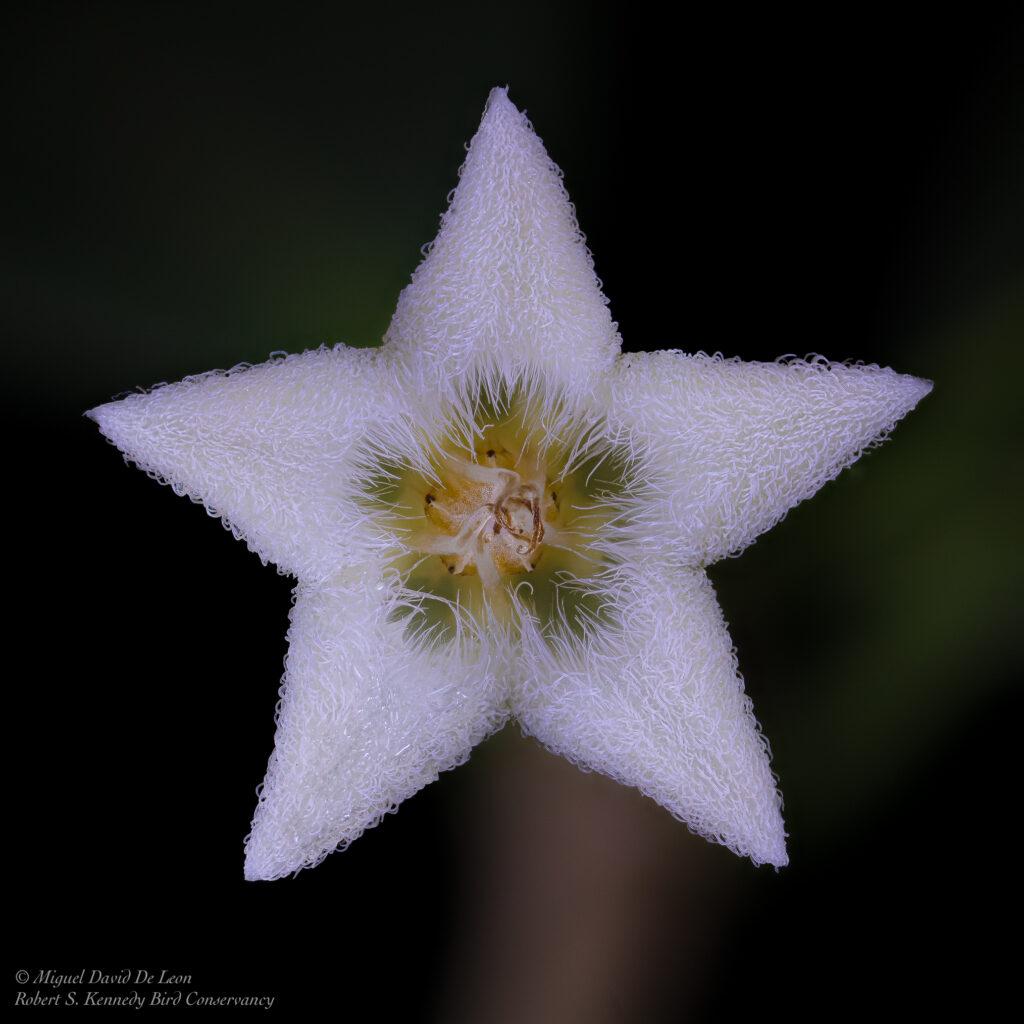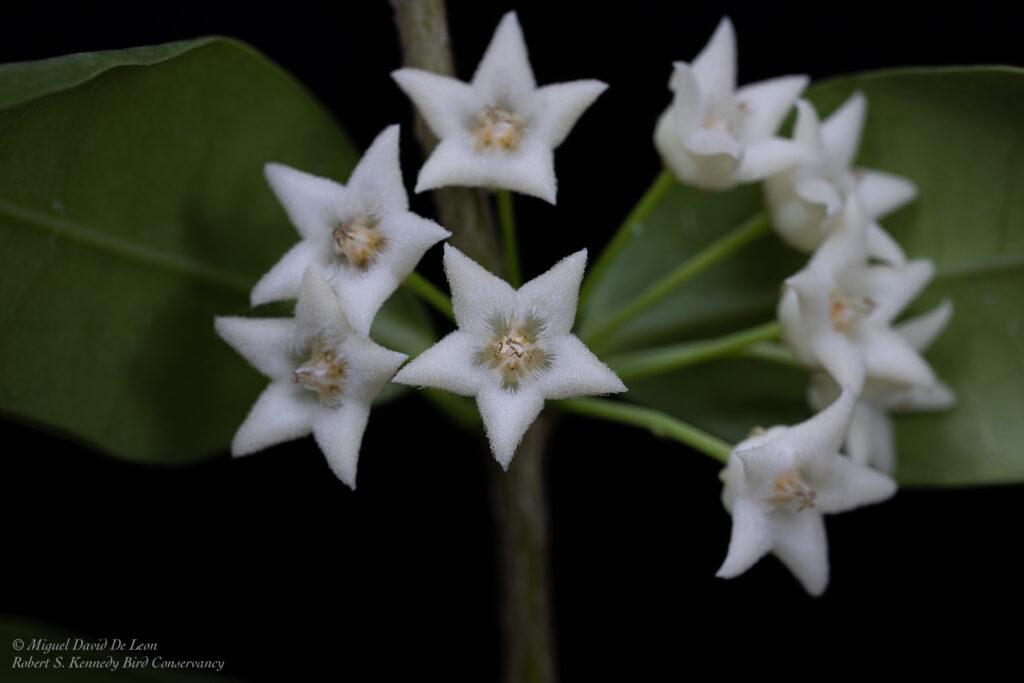
•A newly described flowering plant, Hoya medusa, has a combination of characteristics unlike any other species in its genus.
•Though there is still much to learn about H. medusa, it’s highly likely that the plant is endemic to Luzon.
•The description of this unique and delicate plant highlights the urgency of protecting forested areas in the Philippines.
As anyone who has ever formally named a species can tell you, the process can certainly produce a euphoric rush. However, it doesn’t always start with a field scientist discovering something novel in the wild. Sometimes, the story begins with a specimen sitting untouched and unnoticed in a museum collection for over a decade. On other occasions, organisms previously unknown to science may have stayed hidden in plain sight due to technological limitations — like Hoya medusa, a new species of star-shaped flowering plant from the Philippines described in the peer-reviewed journal PhytoKeys.
Searching for a star
“The first photographs of the species we saw four years ago on social media were taken using smartphones,” explained Dr. Miguel David de Leon, a field biologist and lead author of the study, in an interview with FlipScience. “Because the flowers are small, there was not much detail visible.”
This contributed to H. medusa being initially misclassified, as the images made its distinguishing characteristics appear like hallmarks of a different subfamily of plants, even to trained eyes. However, after years of searching, de Leon and his co-authors were able to obtain high-resolution photos of the plant. This enabled them to properly classify it under Hoya, a genus of tropical plants whose members are typically epiphytes — plants that grow on the surface of other plants, instead of taking root in the ground — and usually have five triangular petals.
“Members of [the Hoya] genus are special due to the beautiful porcelain-like inflorescences [or flower clusters], known as umbels, which they produce from peduncles [or stalks] at certain times of the year,” Marjorie delos Angeles, an assistant professor from the Institute of Biological Sciences at the University of the Philippines Los Baños, told FlipScience. Also known as “wax plants,” Hoya plants produce flowers that may either be sweet-smelling or unpleasant.

A vespertine, serpentine star
H. medusa exhibits the signature traits of most Hoya plants, but also possesses what the researchers describe as “an unusual combination of characters,” making it unique among all Hoya species with a shrubby habit (the plant’s overall shape as it grows). Aside from resembling an urn or pitcher, H. medusa also features elongated, snake-like lobes growing from its corona; these serpentine growths inspired the researchers to name the plant after Medusa, the snake-haired figure with a petrifying gaze from Greek mythology.
“The flowers typically open during early evening, but remain open throughout the flowers’ lifespan,” shared de Leon. Scientists say that certain flowers bloom at night in order to accommodate nighttime pollinators, such as moths. However, since H. medusa has only been studied in cultivation, its specific pollinators have not yet been identified. The vespertine flowers of H. medusa are said to have a powdery or mild jasmine scent. The researchers observed that H. medusa‘s flowers, which are about the size of a thumbnail, can survive for up to 15 days.
Currently, the researchers aren’t sure how or why H. medusa evolved to be so different from other Hoya species. As de Leon stated, “There are theories and hypotheses, but there is no definitive answer to what drives diversification of Hoya species.” Genetic and environmental factors may explain H. medusa’s one-of-a-kind combination of morphological traits, said delos Angeles.

Popular and possibly endemic
Hoya species are diverse and easy to take care of at home, contributing to their popularity as house plants during the COVID-19 pandemic. Perhaps unsurprisingly, plant nurseries and hobbyists have been widely trading H. medusa since 2018, both locally and abroad, under the name “cottonbell.”
Verified H. medusa samples were obtained from the forests of Mt. Cetaceo, the third highest peak in the Sierra Madre mountain range. “Considering that Hoya species are high-profile or target species by researchers — and that H. medusa has not been reported elsewhere — it is reasonable to say that it is endemic to Luzon,” said de Leon.
Due to a deficiency in available data, experts are unable to determine the exact population size of H. medusa. The research team aims to study the plant in its natural habitat to better understand it and identify its pollinators.

Treasures in threatened forests
“Hoya species thrive in warm, shaded habitats that have medium to bright light,” delos Angeles explained. “Borneo, New Guinea, and the Philippines are suitable habitats for Hoya plants due to their tropical climate, which favors growth and development of members from this group.” The availability of surfaces upon which such species can grow (such as rocks and trees) is also a factor, added de Leon.
Currently, the proposed conservation status of H. medusa is “Data Deficient” — but that doesn’t mean it’s out of the woods yet, so to speak.
The forested areas of Mt. Cetaceo are under threat due to illegal commercial logging, overharvesting of trees, slash-and-burn (kaingin), and agricultural land conversion. The particular H. medusa specimen examined by the researchers came from a “heavily logged” section of forest. “The western portion of the area is near a protected forested area and remains intact, but it is endangered by rapid expansion of agricultural lands by the lowland settlements,” according to the paper.
Stressing the importance of forest conservation in the Philippines, delos Angeles emphasized that the country’s twelve forest formations allow “unique and diverse” plant and animal species to thrive. “These forests provide numerous ecosystem services, as well as provide support to different unique forest treasures, which include Hoya species.”
References
- De Leon, M.D., Cabactulan, D., Cuerdo, R., & Rodda, M (2023). “A new species of Hoya R.Br. (Apocynaceae, Asclepiadoideae) from the Philippines.” PhytoKeys 222: 19-26. https://doi.org/10.3897/phytokeys.222.98275
- Duya, M.R., Duya, M., Alviola, P., Balete, S., & Heaney, L. (2011). “Diversity of small mammals in montane and mossy forests on Mount Cetaceo, Cagayan Province, Luzon.” Fieldiana Life and Earth Sciences, Number 2:88-95. 2011. DOI: 10.3158/2158-5520-2.1.88
Author: Mikael Angelo Francisco
Bitten by the science writing bug, Mikael has years of writing and editorial experience under his belt. As the editor-in-chief of FlipScience, Mikael has sworn to help make science more fun and interesting for geeky readers and casual audiences alike.









